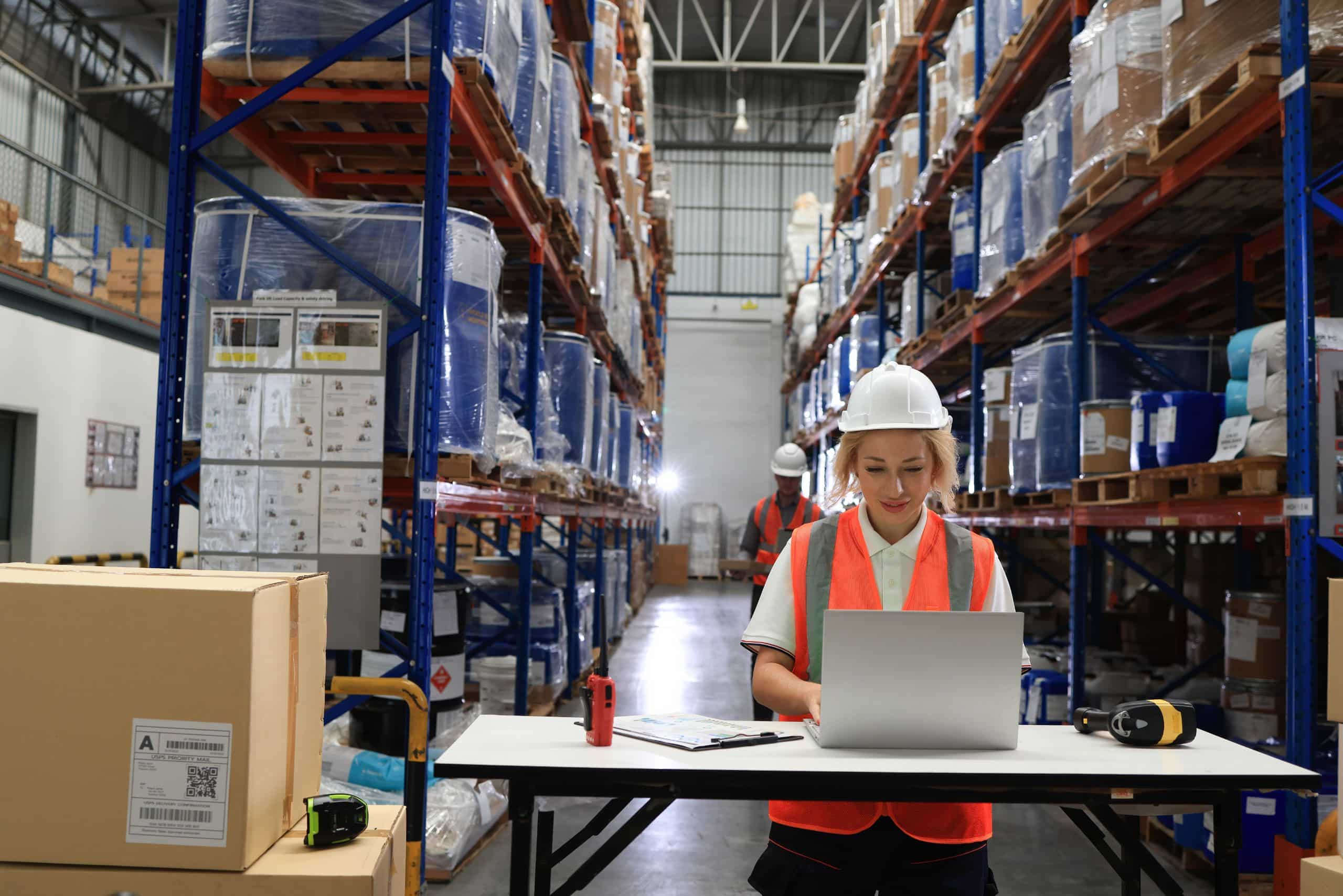Our answers
to your questions
The world of logistics is complex and certain concepts can be difficult to understand. Being in control of your logistics means being more independent and also means understanding your environment and associated concepts.
Find a logistics glossary here, as well as answers to the most frequently asked questions. Yours may be there!
The world of WMS
The price of a WMS (Warehouse Management System) can vary considerably, ranging from €25,000 to €250,000 (or more) for its acquisition. The cost of WMS software depends on many factors, including the required features , the size of the warehouse , and the complexity of logistics operations.
Logistics tracking software is often an feature of WMS software . WMS, on the other hand, is a broader system that manages all warehouse operations. Traceability focuses specifically on tracking the movement and status of products at each stage of the supply chain.
WMS software improves returns management via:
- Real-time traceability of returned products,
- Optimization of reception and sorting processes,
- Storage management and inventory management ,
- Error prevention with the Poka Yoke principle.
In on-premise , the software is installed on the company's servers , the license is purchased, and the company manages the infrastructure. In SaaS , the software is hosted by the provider , accessible by subscription, without any initial hardware investment.
initial cost is drastically lower (OpEx vs. CapEx). Over the very long term (10-15 years), the cumulative cost of subscriptions may seem high. However, a complete TCO analysis for on-premises deployments must include the salaries of dedicated IT staff, the costs of replacing hardware every 5 years, and expensive upgrade projects. By including all these costs, SaaS very often proves to be more advantageous .
When you have strong requirements: strict data localization, minimized latency in an automated warehouse, extreme customization, already available IT infrastructure, or highly regulated sector.
Much faster than an on-premise WMS. Since there is no hardware infrastructure to buy, deliver and install, a SaaS deployment can be done in a few weeks, compared to several months for an on-premise project.
For very small-scale operations, it's theoretically possible to do without one, but it quickly becomes unmanageable and prone to errors. For professional, reliable, and efficient practices, a WMS (Warehouse Management System) is essential . It ensures instant product identification, routing to the correct dock, real-time traceability, and flow synchronization, which are the very essence of cross-docking.
This is a software feature that integrates chemical storage rules . It prevents the WMS from assigning a storage location to a product if it is incompatible with materials already present nearby. It provides a safety feature to prevent dangerous chemical reactions.
Although not legally mandated like an operating permit, a WMS has become practically indispensable for ensuring compliance with regulations (Seveso, ICPE). In the event of an inspection or incident, proving due diligence without a tool like a WMS is extremely difficult, if not impossible.
The WMS software acts as the "brain." Based on the dimensions and weight of each item in an order (master data), it calculates the smallest and most suitable carton before (packing calculation). It then instructs the operator or packaging machine accordingly, eliminating "empty space" and reducing consumable and transportation costs.
The WMS uses ABC classification (often enhanced by turnover, known as ABC/D) to optimize slotting . It places high-turnover items (even if they are of low value, Class CD) in the "Golden Zone" of the warehouse to minimize operator travel time during order picking.
A Warehouse Management System (WMS) is warehouse management software that focuses on operations inside the warehouse, such as inventory management, picking, slotting, order preparation, and storage. A Yard Management System (YMS) is a complementary system, usually a module integrated with the WMS, that manages the flow of goods outside and in the immediate vicinity of the warehouse: trailers, drivers, loading docks, and loading bays.
No. Generative AI complements and enhances existing WMS solutions. It makes them smarter, more accessible, and more responsive, but the core functionality (inventory, location, flow, and transportation management) remains within the WMS software. AI is an "intelligent overlay," not a replacement.
It depends on the nature of your WMS solution. Modern, scalable solutions, including SaaS WMS and SaaS logistics solutions, are generally designed to be open (via APIs) and easily integrate generative or conversational AI modules. Legacy on-premises systems may require significant upgrades or the deployment of a different WMS platform. Assessing AI compatibility should be a key element of the WMS specifications for any future project.

The world of Supply Chain
Traditional logistics manages the flow of products to the customer. Reverse logistics , or returns logistics, deals with return flows: defective, non-compliant, recyclable, or end-of-life products. It thus encompasses all the processes that manage the flow of products from their point of consumption to the point of origin.
A sustainable supply chain is one that integrates environmental, social, and economic criteria into all its decisions. Its goal is to minimize its negative impact on the environment (CO2 emissions, waste, resource depletion) while remaining economically viable and socially responsible.
Green logistics focuses primarily on the environmental aspect of logistics activities (transport, storage, packaging). Sustainable supply chain is a broader concept that encompasses green logistics but adds social/ethical (working conditions, fair trade) and economic (long-term profitability, resilience) dimensions across the entire value chain, from raw material sourcing to the end customer and recycling.
The circular economy in logistics aims to move beyond the linear "produce-consume-dispose" model by creating value loops. This involves optimizing material and product flows to minimize waste and maximize the reuse, repair, and recycling of products and packaging. Reverse logistics (or returns management) is a central element of this approach.
The first step is internal. Before even considering changing carriers or TMS software, analyze your warehouse performance . Measure your order preparation cycle time, your picking error rate, and the reliability of your inventory management. Optimizing these indicators with high-performing WMS software will have the most immediate and significant impact on your last mile.
Its high cost (up to 53% of total costs) stems from its low density . A long-haul truck transports thousands of packages between two points, thus diluting the costs. The last mile, however, involves numerous stops to deliver one or two packages at a time , multiplying the labor, fuel, and time costs per package.
No, not necessarily. A multi-factory account (MFC) is particularly relevant for companies with a high volume of orders in specific urban areas and for fast-moving products. For a company with a geographically dispersed customer base, the investment might not be worthwhile. A detailed analysis of sales data is essential before proceeding.
Cross-docking is a logistics flow where received goods are not stored but immediately transferred to the delivery dock for shipment. A WMS can use ABC classification to trigger this flow : if received goods are a Class A product in high demand and expected for a customer order, the WMS will prioritize cross-docking them.
No, not necessarily. It's particularly effective for high-turnover products (fast-moving consumer goods), perishable goods, press products, promotional items, pre-prepared e-commerce orders, or components for just-in-time production. Low-turnover products or those with unpredictable demand are less suited to this method.
ROI is calculated by comparing gains to investments.
- Benefits : Savings on real estate costs (less storage space), reduction in handling and personnel costs related to storage and picking, reduction in stock holding costs, improvement in service quality (shorter lead times).
- Investments : Cost of the WMS/YMS solution, possible redevelopment of the warehouse, purchase of specific handling equipment, cost of team training and change management.
Yes. A product packaged in a right-sized box has much less room to move around. This drastically reduces the need for cushioning and prevents the product from hitting the sides of the box during transport. Less movement means less vibration, fewer shocks, and therefore a significantly lower breakage rate.
It depends on the sector, the density of your products, but some e-commerce businesses report shipping cost reductions of 10 to 20% on average.
This is a stock classification method based on the Pareto principle (80/20). It divides products into three classes (A, B, C) according to their value (unit cost x sales). Class A (20% of items) represents 80% of the value, allowing management efforts to be focused on the highest-value products.
Absolutely. Returns logistics require a dedicated goods receiving area and specific dock processes. A good YMS allows you to plan and isolate these flows so they don't disrupt standard delivery flows. It can also pre-notify the WMS software when returned goods arrive, allowing the returns team to prepare.
Traditional AI in logistics (Machine Learning, predictive analytics) analyzes existing data to make forecasts (e.g., anticipating demand, optimizing routes). Generative AI (Gen AI) goes further by creating new content . In supply chain management, this translates into the ability to generate complex scenarios (e.g., alternative transportation plans, modeling the impact of a crisis), interpret natural language to interact with WMS software, or create personalized customer messages. It is a creator of solutions, not just an analyst.
Gen AI, integrated into a WMS solution, improves inventory management in two key ways:
- Demand forecasting: It uses heterogeneous data (including external data such as social trends) to predict demand more accurately, optimizing inventory turnover and reducing the risk of stockouts or overstocking.
- Dynamic slotting: It generates in real time the most efficient dynamic slotting plan based on incoming orders (including activity peaks), optimizing picking and palletizing time.
The world of TMS/WMS synchronization
Simply put, the Warehouse Management System (WMS) manages everything that happens inside warehouse walls Transport Management System (TMS) the hand , manages everything that happens outside : transport planning, carrier selection, route optimization and delivery tracking. The WMS stops at the shipping dock, where the TMS takes over.
Yes, it is entirely possible and even common.
Many companies begin by implementing WMS software to optimize their warehouse management and preparation. Others, whose business relies heavily on transportation, may prioritize TMS software. However, to achieve a higher level of performance and end-to-end visibility, synchronizing the two systems becomes essential.
No, that's a misconception.
Today, with the rise of SaaS (Software as a Service) solutions and APIs, integration has become much more accessible and affordable for SMEs and mid-sized companies . The benefits in terms of efficiency and cost reduction can be even more impactful for mid-sized structures.
The duration can vary considerably depending on the complexity of your processes, the technologies chosen (unified suite vs. heterogeneous systems integration), and the resources allocated. A project can last from a few weeks for a standard integration via existing connectors to several months for a highly complex custom project . It is only after completing the initial audit and scoping phase that you will obtain a realistic schedule.
The cost is variable and depends on several factors : the cost of software licenses (WMS/TMS), the cost of the integration service (if you use an external integrator), any specific developments, and internal costs related to project management and training. However, keep in mind that this cost must be considered an investment to be evaluated in relation to the expected ROI (savings on transport, productivity gains, etc.).
The WMS informs the TMS when orders are ready for shipment (order picking complete). The TMS then schedules the transport and communicates the estimated time of arrival (ETA) to the YMS/Dock Scheduling System. This information allows the correct dock to be allocated at the right time, facilitates cross-docking, and optimizes last-mile delivery.
Prompt-driven (or natural language instruction-driven) operation is the application of conversational AI to a TMS (Transport Management System) software. Instead of navigating complex menus, the user formulates a simple query , such as "Find the most economical carrier for tomorrow's deliveries while minimizing CO₂ emissions," for example.
The world of picking
When order volume is high, warehouse space is large, products are bulky/fragile, or labor and error costs become critical.
The first step is often organizational. Before any technology, make sure your warehouse is well organized . Set up an ABC classification for your products and organize your storage accordingly (the "slotting" method). Also, using software to optimize picking lists can already reduce distances traveled by 10 to 20%.
Return on investment (ROI) varies greatly depending on the technology chosen and the size of the warehouse. For systems like Voice Picking or Pick-to-Light , the ROI is often seen between 12 and 24 months . For heavier systems like AMR robots , the investment is more significant, but because the productivity gains are much higher, the ROI is generally between 3 and 5 years .
Absolutely. It's even a very relevant approach. A warehouse can use a "Goods-to-Man" solution with mobile robots for its Class A (high-turnover) products, Voice Picking for Class B and C product aisles, and a simple manual process for very large or very slow-moving items. It's the role of the WMS platform to manage this heterogeneity and assign the right task to the right resource.

Logistics and supply chain glossary
Storage location in a pallet rack/shelf.
A method of ranking a repository in descending order of outputs. The repository is thus divided into 3 groups:
- Group A : composed of references constituting 80% of outputs.
- Group B : composed of references constituting 15% of outputs.
- Groups C : composed of references constituting 5% of outputs.
This analysis makes it possible to know the references deserving particular attention.
The container is the stock object constituted upon receipt and containing 1 to N items of quantities different from 1 to N lots. It always has an SSCC label identifying it.
A container contains stock. It can be the subject of a movement, a reservation, an addressing… The fact of moving, addressing, reserving the container directly allows the reservation, movement, addressing of its contents.
For example : A single reference pallet will be considered as a container.
It is the action of moving goods from the arrival docks to the departure docks, without passing through the stock.
This is the company owning the merchandise. She is the custodian of the stock. The depositor receives his goods from suppliers and delivers them to end customers (Third Parties).
For example: A logistics service provider works on behalf of several depositors and delivers to the end customers of its depositors.
It is the gap between physical stock and computer stock
An inventory management rule allowing the management of products with an expiration date.
An inventory management rule in which we send out the products returned the earliest first.
An operation consisting of superimposing containers.
An inventory management rule in which we send out the products returned later first.
It is the act of physically booking goods on behalf of orders.
Physical reservation specifically reserves a quantity of items at a given address.
Deliverability allows the generation of picking replenishment, preparation order, etc.
A logistics management system for products that are collected by the company. This may involve recycling, recovery and other forms of product returns from the customer to the producer.
This is the physical warehouse where the logistics service is carried out.
Wave mode is a preparation mode which consists of picking up items anonymously (not linked to the notion of ordering), then packing.
Wave mode is a two-step preparation mode.
An order authorizing a manufacturing shop to produce parts.
A type of order preparation in which the prepared SKUs (sales units) are stored directly in their package.
Taking UVs (sales units) from their storage unit to prepare an order.
A type of order preparation in which the prepared UVs (sales units) are only stored in their package at the end of the order preparation process.
Serial Shipping Container Code.
The unique identification number of a pallet.
It is a medium used for shipping. It may be a pallet, or a package made up during preparation. It can also be a container entirely reserved for the order. In the latter case, the container becomes the support.
A wave defines a list of orders selected during the act of deliverability to be put into preparation.
BULK is opposed to the container mode and qualifies a quantity of an item from a specific lot.
BULK does not directly correspond to an inventory item. The reference must be permanently specified, as well as the quantity and address of the bulk stock that we wish to move, reserve, address.
The notion of BULK is not associated with any stock identifier. There is therefore no associated SSCC.
Did
n't
find it?
Send us your question
The Sita'Team is here to listen to you! Fill out this form with your question(s) and send it to us.
Send us your question

















